Buy or gift a stand-alone digital subscription and get unlimited access to dozens of back issues for just £18.99 / $18.99 a year.
Please register at www.exacteditions.com/digital/cornucopia with your subscriber account number or contact subscriptions@cornucopia.net
Buy a digital subscription Go to the Digital Edition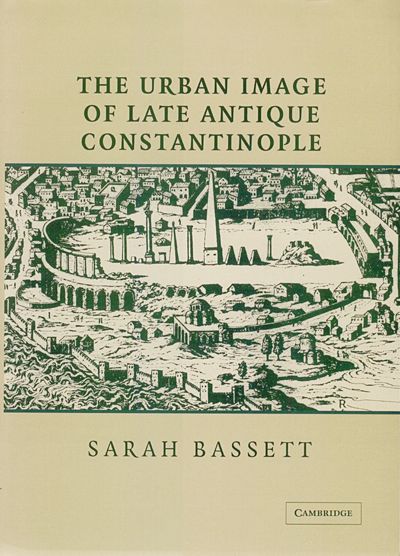
Consider this curious incident from eighth-century Constantinople: while two local scholars were examining an ancient statue, it toppled from its pedestal and squashed one of them. In the official inquiry that followed - for there was suspicion of murder - a philosopher declared after examining the base of the statue that ‘by divine providence, I find it so in the writings of Demosthenes, that a man of rank would be killed by a statue’. The author who recorded these events concluded: ‘Take care when you look at old statues, especially pagan ones.’ Although the incident just might have inspired the dramatic conclusion of Don Giovanni, it suggests at best an ambivalent attitude towards public art in the Byzantine Middle Ages.
Byzantine history is full of similarly amusing stories. By the eighth century, the public statuary of Constantinople seems to have lost its original meaning and had come to be regarded as talismanic or a source of magic. With a few exceptions, ancient statues were regarded as vaguely sinister, capable of harm, and at best avoided. For example, the life of St Andrew the Fool tells of a woman who became possessed by the demons that inhabited statues (presumably male and nude) in the Hippodrome, who urged her to have intercourse with them. The life of St Euthemius relates that the Emperor Alexander, upon becoming impotent, was instructed by magicians to clothe these statues in sumptuous garments and burn incense before them, and to provide a statue of the Calydonian Boar with teeth and genitals.
Some centuries later, the Empress Euphrosyne, who was addicted to magic and divination, cut off the snout of the same Calydonian Boar. She also had a statue of Hercules flogged and had others broken and dismembered. During the attack on Constantinople in 1204, the populace destroyed a statue of Athena in the Forum of Constantine because her gesture was interpreted as beckoning to the crusaders to come on in.
What is noteworthy in all this nonsense is that the original purposes and messages of the statues - such as imperial victory, civic virtue and even urban beautification - had long since been forgotten and had been replaced by a folkloristic significance. It is a good indication of the transformation of Constantinople from an ancient city to a medieval one which had lost connection with its own past.
Several centuries earlier, statues and public art had been a critical component in the foundation of the city by Constantine, c324-330 ad. A new creation, like Washington DC or St Petersburg, it was capital city built virtually from scratch. Although the old city of Byzantion was a thousand years old at the time, nothing significant ever happened there, and it left no important remains. Despite its spectacular and strategic location, the city lacked both a significant history and specific Christian religious associations. The novelty of the new capital allowed Constantine and his successors freedom in the deliberate crafting of a ritual site, as a setting for the imperial ceremonial that guaranteed taxis - the order of the well-governed cosmos. At the same time, the city must have seemed deficient in character, without the sort of significance that the resonance of old and new might have provided.
Thus, in the early centuries, much of Constantinople’s identity was by necessity imported - in the form of relics and monuments, and the legends that came with them. Sarah Bassett’s study of the reuse of ancient sculpture in early Constantinople offers a unique approach to the creation of a civic identity in the Late Antique period, and an important reassessment of the foundation of the Byzantine capital.
Constantine’s new capital was decorated with statues brought from all parts of the empire. Public monuments and statuary were part and parcel of any Late Antique city, necessary elements of its public spaces. They provided an element of urban beautification and formed part of the backdrop for public urban life. Both pagans and Christians of the fourth to sixth centuries were raised in an atmosphere of visual imagery that was part of the legacy of classical culture.
But statues and monuments also bore messages. They were part of the ‘advertising’ that connected the ruler to the people, asserted the hierarchy of order within the empire, and gave meaning to place. Visual imagery was an integral part of pagan and Christian religions as well. Graeco-Roman religious rituals often had a statue as the focus of devotion; learned Christians could appreciate the aesthetic qualities of classical sculpture devoid of it religious context, but also understood images as powerful vehicles of communication. In fact, the ‘power of images’ was one of the factors leading to the Iconoclast debates of the eighth century.
Hundreds of statues, obelisks, columns and other objects of civic adornment were brought to the new capital by Constantine and his successors, and, although most have vanished, they survive in numerous textual references. The many interpretations that have been given to them mirror the social and religious changes that were redefining the Roman Empire - an empire set against a backdrop of classical traditions. Civic art is in many ways a self-conscious art, mirroring the attitudes and concerns of the city around it. Thus the themes of the statuary can tell us much about its context, just as its context can tell us much about how to understand the statues.
Bassett’s study is important for several reasons. Although Constantinople was the most important city of the medieval Mediterranean, scholars are poorly informed about its physical fabric - in effect, it is a city without a visual image. Studied primarily from texts, rather than from monuments, the Byzantine city has traditionally been the domain of the philologist rather than the archaeologist. Our most important books about Constantinople (such as the standard texts of Mango, Dagron and Magdalino), no matter how evocative, are virtually unillustrated. Our knowledge of Byzantine Constantinople can hardly compare with what classicists know about ancient Athens or Rome. Constantinople has not benefited from the decades of careful, systematic excavations these cities have enjoyed, which have provided vivid images of the settings for the important events of antiquity.
Bassett takes an important step towards redressing this imbalance. As she explains, Constantinople in its heyday was full of evocative visual images that played a major role in constructing its identity. She demonstrates that much of the imported ancient figural sculpture was carefully selected for public display. Unfortunately, most of the reused antiquities are known only from texts, and often only from brief or garbled references, which have been used and abused selectively by scholars. Bassett provides a complete list for the first time and, more than just telling us where they were and what they looked like, she situates them within the ideological framework of the new capital.
The book provides a much-needed, balanced assessment of the état de la question on the early city. Particularly good is the insistence on Constantinople as an imperial capital - not simply as a pagan city or as a Christian city, but one in which both churches and temples were necessary, it seems, in equal number. To be a capital, it required a Capitolium. Hers is the best explanation I have read of the necessity for temples in a city built to be a Christian capital. Moreover, she presents evidence from the law codes of Theodosius to suggest a less single-minded attitude towards pagan construction. For example, an edict directed at the city of Edessa, dated 382, indicates that the sacrifices should cease but that the temple should remain open, ‘for the common use of the people’, its contents ‘measured by the value of their art rather than by their divinity’. The emphasis on aesthetics and appreciation of art for art’s sake suggests the degree of nuance still possible in the growing polarity between pagans and Christians.
Bassett thus adds needed shading to the debate about Constantine’s personal acceptance of Christianity, and the ambiguity in his public actions and patronage. In a capital it would have been necessary for public Roman ritual to continue, with all its trappings. Constantine rebuilt and rededicated pagan temples (such as Fortuna of Rome and Cybele - an interesting, possibly meaningful pair). In fact, Bassett seems to understand this better than did Constantine’s very Christian biographer Eusebius, who was hard-pressed to explain Constantine’s erection of pagan statues, lamely suggesting that it was all part of a subtle policy to make fun of the old gods:
‘The pompous statues of brass were exposed to view in all the public places of the city: so here a Pythian, there a Sminthian Apollo excited the contempt of the beholder, while Delphic tripods were deposited in the Hippodrome and the Muses of Helikon in the Palace. In short, the city which bore his name was everywhere filled with brazen statues of the most exquisite workmanship, which had been dedicated in every province, and which the deluded victims of superstition had long vainly honoured as gods with numberless victims and burnt sacrifices, though now at length they learned to think rightly, when the emperor held up these very playthings to ridicule and the sport of all beholders.’
Public ensembles of statuary imported in Constantine’s day were, according to Bassett, ‘conceived largely in historical terms’, to emphasise the historical links with Rome and the dominion of Constantine, to make the city a New Rome. Thus, in the Hippodrome there were images of victory - both military and sporting - and statues which made association with the Roman past (such as Aeneas; the she-wolf with Romulus and Remus; Augustus, Julius Caesar, Diocletian) to evoke memories of the golden age of imperial greatness and to foster the idea that the empire would regain its past glory.
But early Constantinople could also be viewed as ‘New Troy’ - that is, the legendary ancestral home of the Romans in the East, from which Aeneas fled following its sack by the Greeks. According to several early Byzantine historians, Constantine had considered establishing his new capital at the site of Troy itself, on the Dardanelles rather than on the Bosphorus. Many of the public statues brought in to decorate the early city refer specifically to the Trojan legend, such as the ensemble that decorated the Baths of Zeuxippos at the entrance to the Great Palace. And Byzantine writers claimed that the colossal statue of Constantine as Apollo-Helios, set at the centre of his Forum, had been brought from Troy itself. As Sarah Bassett argues, early Constantinople was very much an intellectual creation, one that ‘grew up around the intersection of history and myth … that makes the city the last link in a chain of destiny that stretched from Troy to Rome.’
New Rome and New Troy: it’s heady stuff. But neither of these ideas existed prior to the time of Constantine; they were consciously constructed. The success of Constantine’s ‘invention’ may be best judged by the fact that the myths and legends promulgated by the collections of statues long outlived the imported works of art. When the city was again ‘reinvented’ by Mehmet the Conqueror after 1453, most of the statues were gone, but the associations with Rome and Troy were still vivid - so much so that Mehmet claimed descent from the Trojans and viewed his conquest of the Byzantine Empire as vengeance against the Greeks for their injustices against the Trojans and other Asiatics in centuries past. One wonders if Mehmet could possibly have read Sarah Bassett’s book.
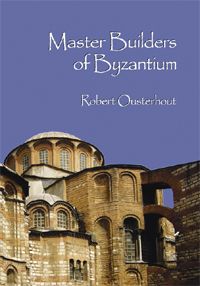
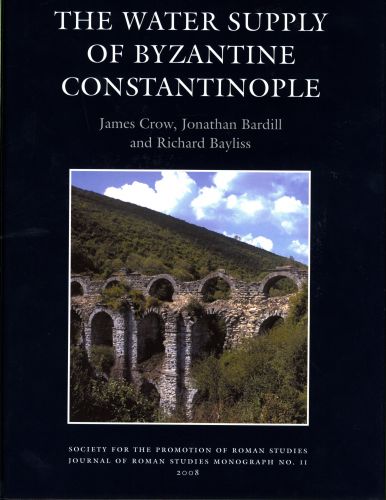
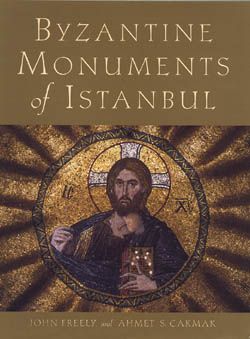 Buy from Amazon
Buy from Amazon
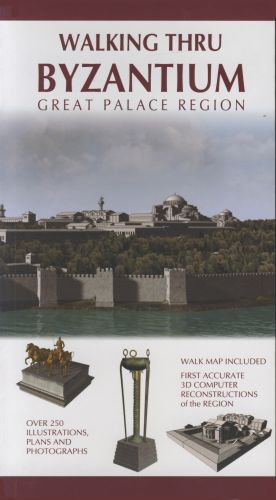 Out of Print
Out of Print
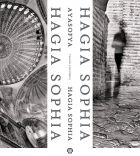 Out of Stock
Out of Stock
1. STANDARD
Standard, untracked shipping is available worldwide. However, for high-value or heavy shipments outside the UK and Turkey, we strongly recommend option 2 or 3.
2. TRACKED SHIPPING
You can choose this option when ordering online.
3. EXPRESS SHIPPING
Contact subscriptions@cornucopia.net for a quote.
You can also order directly through subscriptions@cornucopia.net if you are worried about shipping times. We can issue a secure online invoice payable by debit or credit card for your order.

Cornucopia works in partnership with the digital publishing platform Exact Editions to offer individual and institutional subscribers unlimited access to a searchable archive of fascinating back issues and every newly published issue. The digital edition of Cornucopia is available cross-platform on web, iOS and Android and offers a comprehensive search function, allowing the title’s cultural content to be delved into at the touch of a button.
Digital Subscription: £18.99 / $18.99 (1 year)
Subscribe now